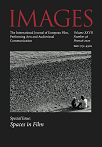Destrukcja jako tworzywo. Ikonografia ruin Warszawy w polskim kinie dokumentalnym po II wojnie światowej
Destruction as a material. Iconography of the ruins of Warsaw in Polish documentary cinema after the Second World War
Author(s): Marek Kosma CieślińskiSubject(s): Architecture, WW II and following years (1940 - 1949), Post-War period (1950 - 1989), Film / Cinema / Cinematography
Published by: Uniwersytet im. Adama Mickiewicza w Poznaniu
Keywords: Iconography of ruins; World War II; Warsaw; destruction; creation;
Summary/Abstract: The image of Warsaw in ruins after World War II is an important motif in Polish documentary and feature cinema in the years 1944-1956. In the text, I discuss the images of the city captured by the first chroniclers as ‘basic’, which then became archetypical icons of the city’s destruction. I point out that the aesthetics of destruction, recorded in Andrzej Panufnik’s early film Ballada f-moll [Ballade in f minor], Jerzy Bossak’s Most [Bridge] and Tadeusz Makarczyński’s Suita warszawska [Warsaw Suite] proved to be exemplary for other artists. I show that the destruction of urban and architectural structures was inspiring for directors: it served as a documentary record, a basis for constructing scripts, and dominant aesthetic, often providing a persuasive argument and serving to shape emotions. References to the resentments of the audience and the anatomy of the ruins were among the elements that shaped the ideological attitudes of various parts of Polish society. For some directors it was also a catharsis after the trauma of the Holocaust.
Journal: Images. The International Journal of European Film, Performing Arts and Audiovisual Communication
- Issue Year: 27/2020
- Issue No: 36
- Page Range: 169-181
- Page Count: 13
- Language: Polish

